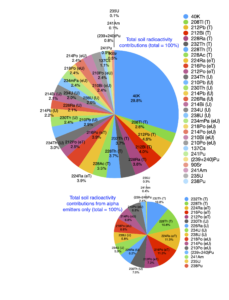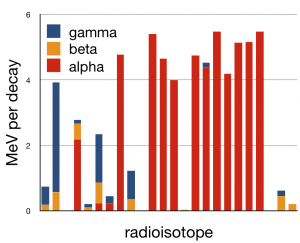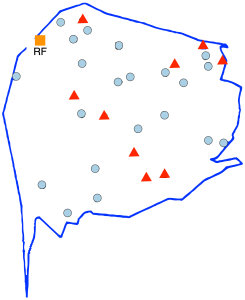FAQ about Rocky Flats and neighborhood
Each question is briefly answered, with a link to documents elsewhere on the site which discussed the question in much more detail.
M = measurements available on rockyflatsneighbors.org (link)
D = document(s) on rockyflatsneighbors.org (link)
E = information/documents available elsewhere (link)
Questions about facts
Are total radiation levels around Rocky Flats higher than farther away?

- Background radiation doses measured by
No. They are consistent with background radiation levels along the Front Range. These are among the highest in the U.S. because of our combination of altitude and soil with high concentrations of naturally occurring radioisotopes. In Colorado about 2/3 is due to soil minerals and 1/3 due to altitude. Background levels vary by 2000% around the state.
- Should I worry about plutonium in soil?

No. Radioactivity can be measured at extrordinarily low levels--just because it can be measured does not mean it represents a health hazard. Pu contributes less than 1% of total soil radioactivity--less even than fallout isotopes from atmospheric weapons testing in the 1960s and 70s. Concentration ranges from very near 'background' levels (the values far away) to as high as 5 pCi per g of soil close to the eastern boundary of the Refuge. The National Institutes of Standards and Technology prepared two soil reference standards (distributed around the world for calibration) for this reason, so that we can precisely compare the relative contributions of Pu and natural soil radioisotopes.
How does Pu differ from natural radioisotopes?

- Total energy radiated (resolved into alpha, beta, and gamma radiation) by radioisotopes in Rocky Flats soil. One of these is 239Pu.
It is very similar to other, natural alpha-particle emitters, but emits much less penetrating gamma radiation. As a result the only appreciable means of exposure are breathing in or swallowing contaminated dust. Can you distinguish Pu from the other, natural alpha emitters in terms of properties shown at left? There is nothing making Pu magically toxic or exotic.
- Are there elevated disease rates around Rocky Flats?

No. After Carl Johnson's claims in 1981, several published epidemiological studies were carried out. Once corrections very the very non-uniform population density were made, the patterns of cancer cases were random. Even studies of Rocky Flats plant workers failed to find elevated rates of cancer or other disease at the plant.
Leukemias are among the most sensitive cancers and among the first to occur; the underlying data was taken long after major radiation releases from Rocky Flats.
- Should I worry about 'hot particles'?

No. They do contribute (less than 0.5 pCi/g of soil) to the total soil Pu content and have been included in the estimated doses on the website. A single very large hot particle was found during Jefferson Parkway sampling out of many hundreds of samples, but thousands of such particles could be inhaled without appreciable effect (1% extra cancer risk). 50-year radiation doses including hot particles characterized by Ketterer are shown at left.